How to Implement "A Design Sprint 3 Days Instead of 5"
Have you ever wondered how some outsourcing companies manage to carry out such diverse projects - always on time and of high quality? Well, today, we are sharing the undergrounds of devabit team's work. Dmytro Kharuzin, UX designer at devabit, wrote an exciting story about our struggles and victories over the day-to-day obstacles in design work. Thanks to design sprint and design thinking, our team works as a coherent machine! Just take a look at their flawless projects! And in the meantime, we publish the full story by Dmytro:
Once upon a time…
Let’s get into a regular story. Just a classic tale about good and evil in the average design process.
Or should we better jump into some real insights? About our daily challenges, extraordinary solutions, and creating catchy designs. If you prefer the latter, this is the right place.
This is a story about our team implementing "Design Sprint 3 days".
It was early summer of 2018. The sun was shining so bright that the grass seemed greener, and the sky seemed bluer than usual. Ah, what a perfect time for creativity, right?
Wait, what do you mean “no”?
Our design team at devabit was working on a complex project for a well-established translation and localization company. A typically conservative workstyle with tons of communication and endless bureaucracy gates for any approval - what else would you expect from a large-scale corporation? Design requirements in MS Excel as the icing on the cake, of course. Altogether, the process turned into a never-ending queue of meetings, discussions, request changes, and emails. A dream project, right? (Just kidding).
We got stuck. Seriously.
At some point, we simply lost track of time and the essence of our work. Requirements were changing from call to call, requests were growing with every other email. Tons of designs, tons of wireframes, tons of ideas...
Well, of course, I add some extra drama not to end up with another regular story. However, only moments like these reveal the urge for significant changes in internal processes.
And that was our chance from the universe for changes. Our client asked to conduct a design workshop for the employees and end users, which seemed to be a perfect start.
At that moment, I was lucky to be reading “Sprint,” a book by Jake Knapp. And believe it or not, that totally changed my design life ;) Obviously, I knew about design thinking methodology before as well as about the benefits of workshops and other fancy design processes. But knowing is not always enough, especially when real life comes on way with its challenges, lack of time, and expertise.
What is a Design Sprint?
I believe you’ve already heard about the Design Sprint, but in case you’ve forgotten:
“The sprint is a five-day process for answering critical business questions through design, prototyping, and testing ideas with customers” Jake Knapp, Author of SPRINT and one of the inventors of the Design Sprint
That’s it. Just five days and a number of step-by-step solution-oriented activities.
Monday: map out the problem and pick up a key focus area.
Tuesday: sketch competing solutions on paper.
Wednesday: make the most difficult decisions and turn the ideas into a testable hypothesis.
Thursday: deliver a high-fidelity prototype.
And finally, Friday: test it out in real life.
So how we did it?
Here is a tricky moment of the story: we got only two days for the workshop, while one needs at least four (according to AJ&Smart edition). Or better five, in a classic version. This meant shrinking, combining, merging, splitting, and removing things in the craziest variations. We were preparing the workshop details for around two weeks. We created an agenda, selected questions, and prepared stationery. I got a copy of the book on my Kindle. Our team was locked N load to bring something really hilarious into the world :)
On the eve of the workshop, we explained the agenda to the client for a more clear mutual understanding and productive study time.
Day 1
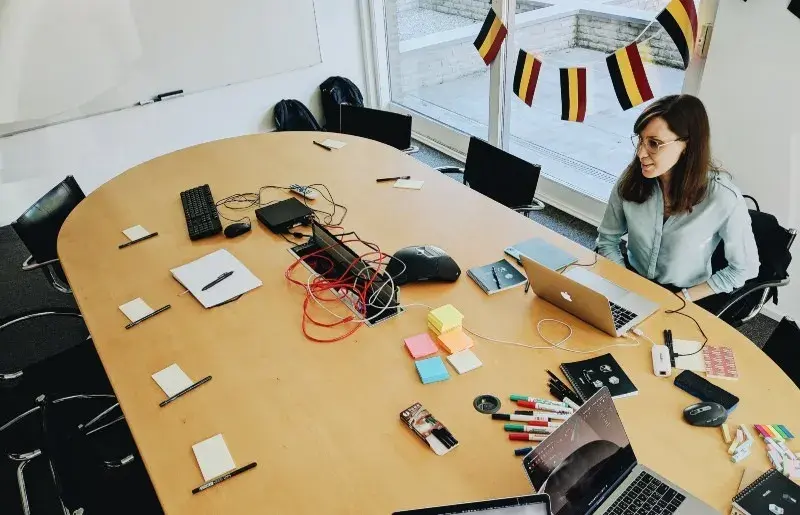
We started the interviews with ten product users. They were asked to reframe pain points as opportunities and challenges of the product using How-Might-We's (HMW's) "magic" words and write them down one by one.
Then we collected their notes and put them on the user journey map. In a short period of time, we got a general picture of the whole project with its stages and peculiarities. Sticky notes were everywhere: on the table, on the walls, and even on windows.
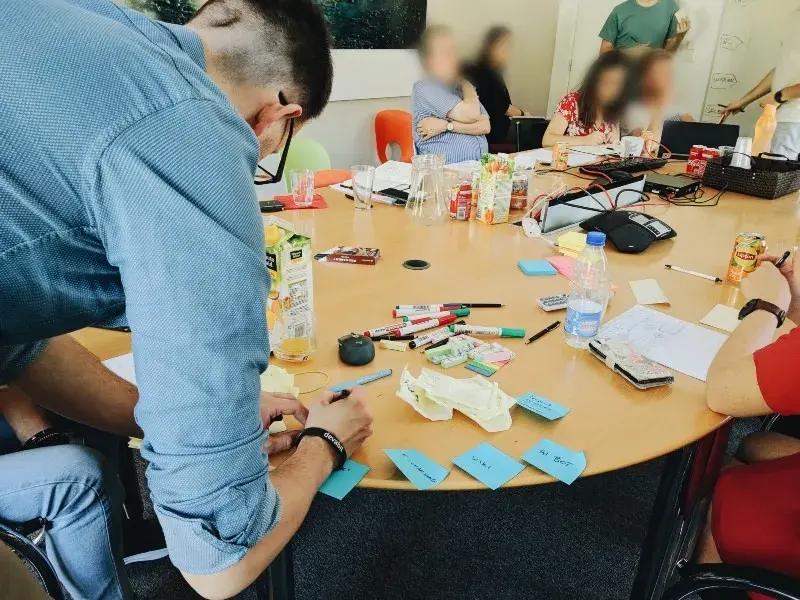
Voting time.
For no less than half an hour, we were calculating the most common answers. Everyone got literally over-excited: it was a fun interactive process. When the last sticker was placed, both our team and our client got extremely surprised with the results. The real problem was hidden in a completely different place than we expected. This exercise let us look at the project from a different angle and brought brand new ideas for discussion to the table.
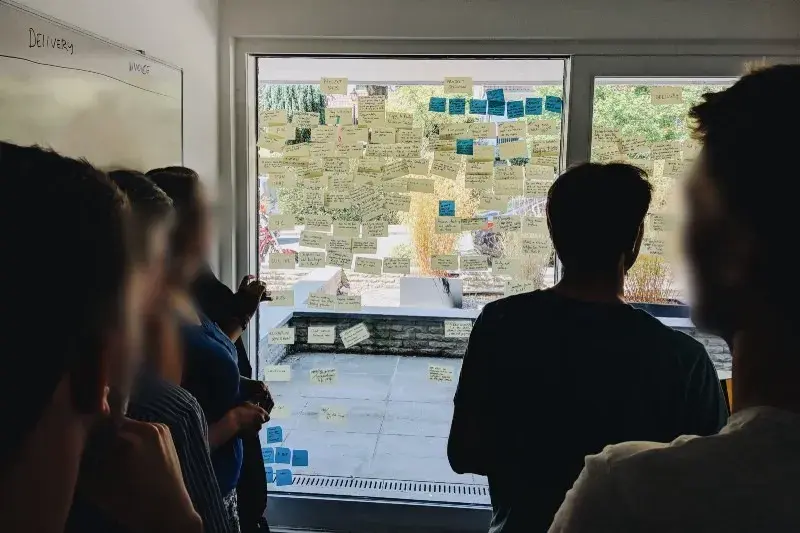
It was time for another stage of note-taking and lightning demo.

The next planned activity was sketching solutions. However, at first, participants didn’t appear enthusiastic enough. They told us they couldn’t draw fine. However, a few moments later, once they began, the process got immediately truly inspiring and productive. Actually, as a result, we were left with plenty of ideas covering some basic workflows.
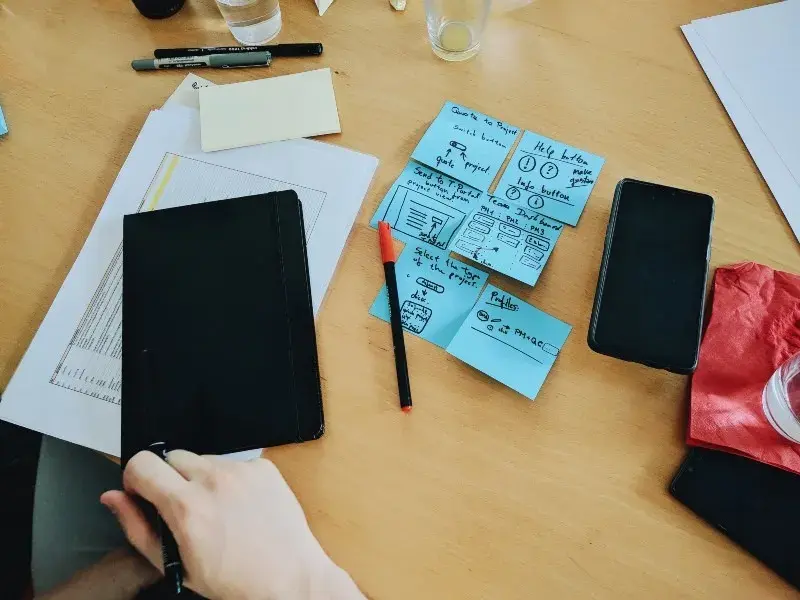
At this stage, the official part of Day 1 was over. We had a clear vision of further product rebuilding…

Night Mode On
Frankly speaking, fitting a five-day sprint in two days of a workshop is not the most painless task you can get. Before moving on to solutions testing, we had to create and deliver them based on the received feedback. And one night was the only time we got for that. One long sleepless night.
We spent endless night hours in the hotel lobby creating a clickable prototype. Desperately trying to be in time before sunrise, we distributed tasks among the team. Luckily, in the morning, we had the main flow finally covered with two prototypes.

Inna Nukhova, our UI/UX designer, working on her part of the prototype
NEVER.
I repeat, NEVER do the way we did.
Day 2
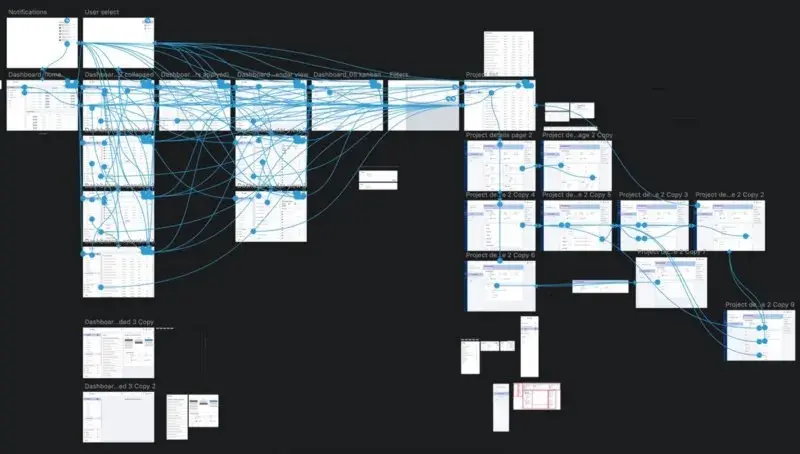
After the last sips of morning coffee, we presented the prototypes to the group. We had two low-fidelity prototypes and several design concepts. A vivid discussion, along with many updates, followed immediately. Testing took most of the day. Every step, every element of the interface...
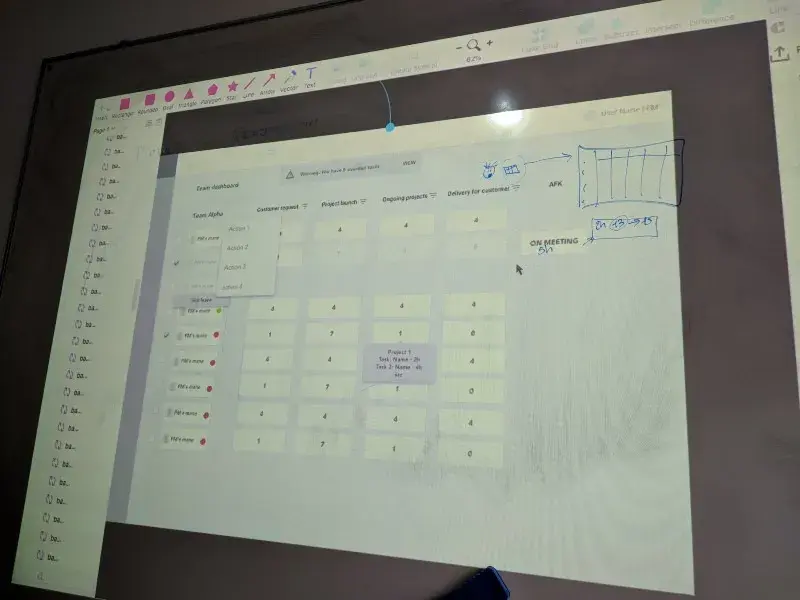
By the end of the day, we had the prototype completely tested. It was low-fidelity, but it was a working solution!
Day 3: Results
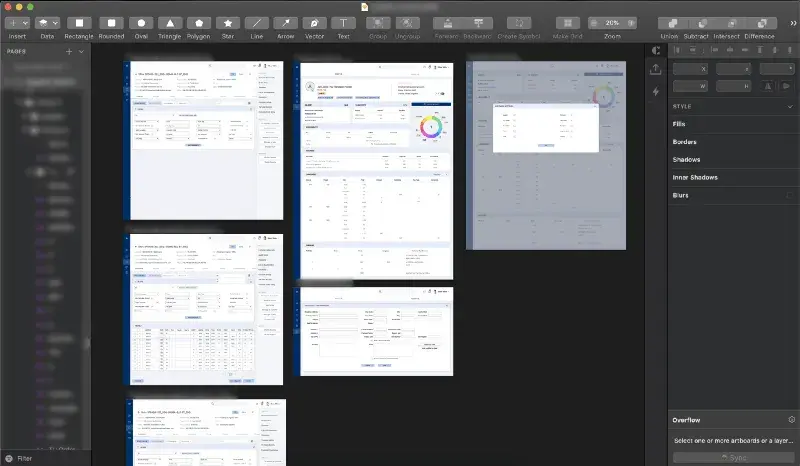
To sum up, just in two days, we collected and listed all the most relevant issues and challenges of the product. Using the design sprint methodology and philosophy, we managed to find exciting solutions and ideas to strengthen the overall product vision. This was done in collaboration with a small group of users and client representatives.
I feel like the best part of this workshop was the chance to talk with real users and implement their suggestion in live mode. The process went so quickly and with a minimum of iterations.
It might sound trivial, might sound like it is no big deal. However, this short and intense workshop turned into the start of some bigger, major changes in our work approach. These were our first steps on the road of design sprints.
And we enjoyed it a lot.

What’s next?
Nowadays, we use the Design Sprint methodology in every other project. We have already successfully delivered a number of discovery phases using design sprint and design thinking techniques. Obviously, every time we adapt to the project realities. For example, lately, we have provided remote design sprint workshops for our clients. It was even more challenging than the offline session from this story. However, we managed it effectively thanks to some wonderful tools: InVision and RealTimeBoard.

Instead of the summary
Trust me, Design Sprint is such a neat and flexible tool. It allows to combine, reordering, and prioritizing tasks so that the team can focus only on the relevant activities. The secret of a successful sprint doesn’t lie in following every rule, as the book says. Adapt! Design sprint works perfectly for any scale and stage of the project. The results will be beautiful and impressive, no matter whether it is a simple app redesign or the creation of a complex system.
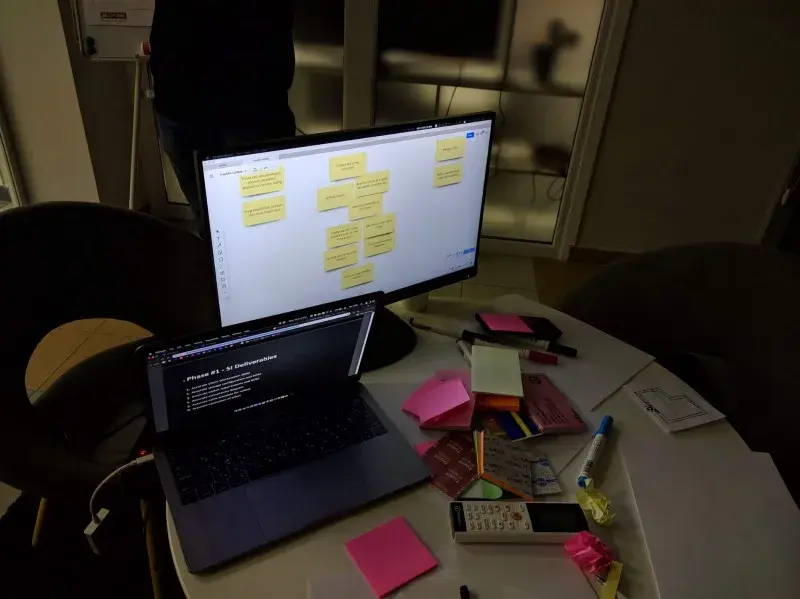
And the last thing…
As they say - when was the last time you did something for the first time? Don’t be afraid to start. Try something you never did before. Try design sprint in your design processes. Make small steps - you will get beautiful results. It is definitely worth trying!
Did you enjoy our story?
We know how to deliver outstanding projects in web and mobile development, UI/UX, 3D, and business process outsourcing.
If you are interested in our expertise, we are always happy to hear from you.
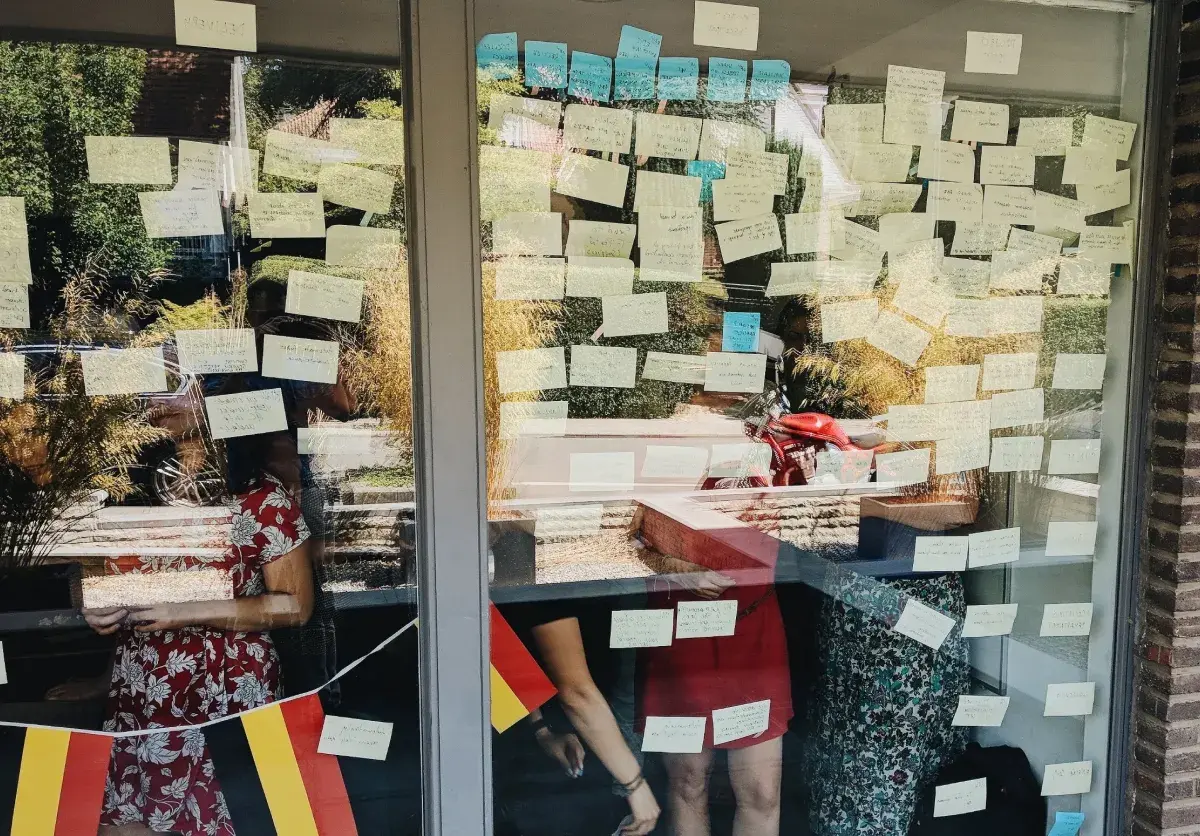
Recent Publications
Don't miss out! Click here to stay in touch.
Discover More

Relevant Articles View all categories
View all categories CONNECT WITH US WE’RE READY
TO TALK OPPORTUNITIES
THANK YOU! WE RECEIVED YOUR MESSAGE.
Sorry
something went wrong



